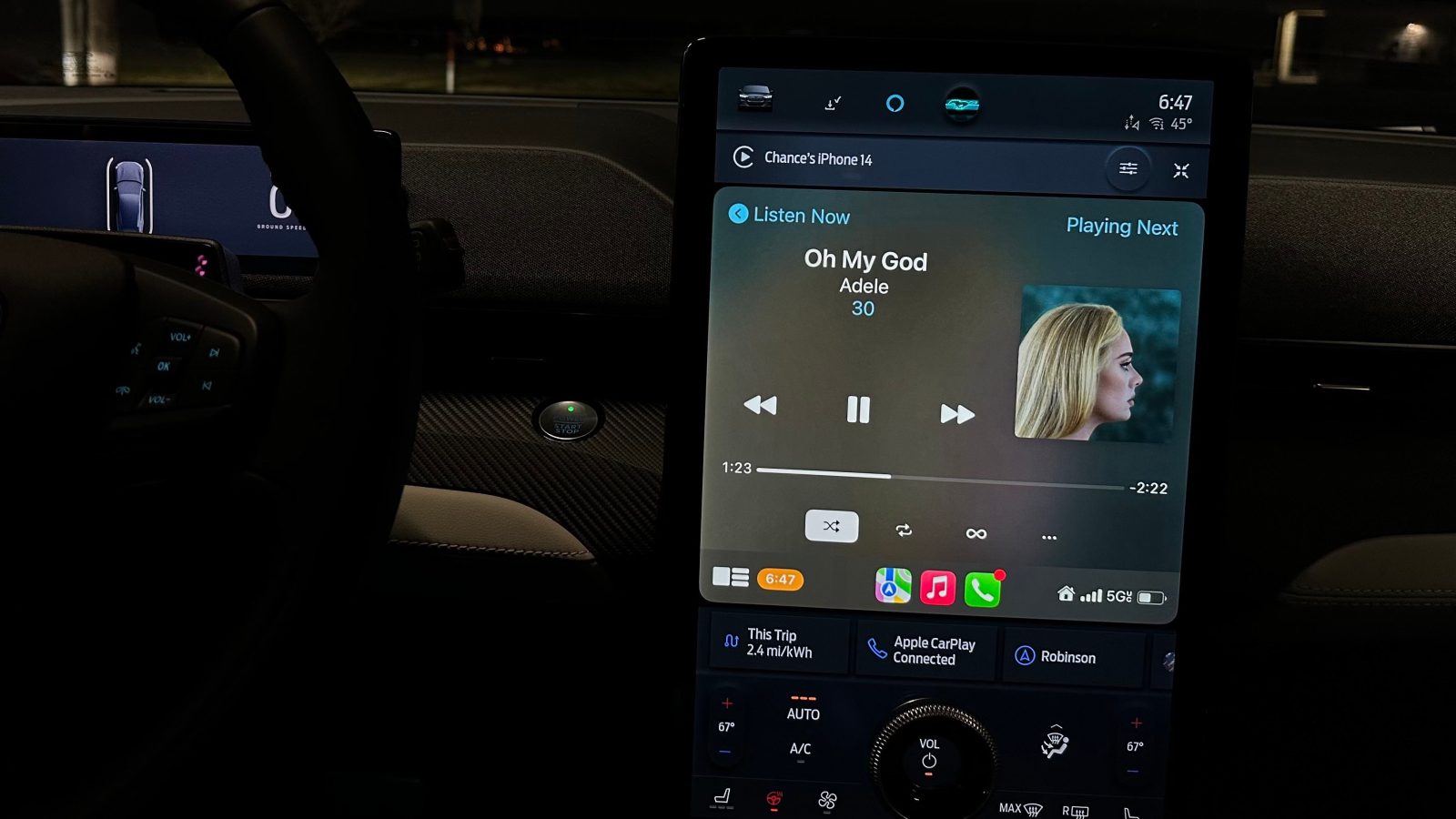
In case you missed it, GM is planning to ditch CarPlay in all of its future EVs starting next year. A new survey from JD Power today only further highlights the stupidity of GM’s decision, revealing that fewer people than ever enjoy in-car infotainment systems from automakers. Instead – wait for it – they prefer CarPlay.
This story is supported by Mosyle, the only Apple Unified Platform. Mosyle is the only solution that fully integrates five different applications on a single Apple-only platform, allowing businesses and schools to easily and automatically deploy, manage, and protect all their Apple devices. Over 38,000 organizations leverage Mosyle solutions to automate the deployment, management, and security of millions of Apple devices daily. Request a FREE account today and discover how you can put your Apple fleet on auto-pilot at a price point that is hard to believe.

As reported by The Verge, the JD Power survey found that just 56% of car owners choose to “use their vehicle’s built-in system to play audio.” That’s a drop from 70% in 2020, according to JD Power data. Additionally, less than half of those surveyed said that “they like using their car’s native controls for navigation, voice recognition, or to make phone calls.”
Shockingly, it turns out that people prefer using CarPlay and Android Auto rather than the built-in systems in their cars.
If there’s one statistic in this survey that could ease concerns for GM owners, it’s that car owners are slightly happier when their car uses the Android Automative operating system platform than a proprietary platform. These systems “score higher in the infotainment category than those with no AAOS whatsoever,” JD Power says.
Android Automotive is Google’s core operating system platform on which automakers can build their own systems. Android Automotive is different from Android Auto, which is Google’s smartphone-mirroring platform akin to CarPlay. Automakers are free to use Android Automotive and simultaneously offer CarPlay and Android Auto on top.
But there’s another caveat to this data. The Android Automotive operating system platform can also be integrated with or without Google Automotive Services. Yes, that’s another poorly named platform from Google.
Google Automotive Services “refers to all the apps and services that come with the car when Google is built into the car.” In GM’s case, the company will use Android Automotive and also offer “Google built-in” apps like Google Maps and Google Assistant.
GM is planning to build its own platform on top of Android Automotive, but its platform will not support CarPlay or Android Auto. Instead, users will only be able to use whatever native system GM builds and designs on top of Android Automotive and Google Automotive Services.
The JD Power survey shows that customers are far happier with cars that integrate both Google Automotive Services and Android Automotive than one that solely integrates Android Automotive. This could be good news for GM, which is planning this exact approach…just without offering smartphone mirroring options with CarPlay and Android Auto.
As The Verge surmises, the JD Power survey says that some car owners are growing frustrated with the ever-increasing amount of technology in their cars. “For the first time in 28 years of JD Power’s car owner survey, there is a consecutive year-over-year decline in satisfaction, with most of the ire directed toward in-car infotainment,” the report explains.
9to5Mac’s Take
One takeaway from this survey is that in-car infotainment is confusing, and that doesn’t bode well for customers. Imagine explaining all of this to someone: Android Auto, Android Automotive, Google Automotive Services, and CarPlay. That’s probably one of the reasons GM dealers and salespeople are so concerned about the move away from CarPlay.
Top comment by Dave Peterson
Maybe GM is trying to lure the 15% of U.S. consumers who don't own smartphones. That's 50 million people, but I'm doubtful they are buying new cars; many of them are children or long beyond their driving days.
As the JD Power survey shows, users are frustrated with tech in their cars. Having to deal with and learn what all the different platforms are when buying a new car won’t help that situation.
The ideal outcome is that every car offers all of this, giving users the choice between using their automaker’s platform or a smartphone mirroring platform like Android Auto or CarPlay.
GM has taken the opposite approach – restricting users from CarPlay and Android Auto. GM’s decision will likely only make customers more frustrated. We’ll see how well this decision works out for them in the long run, but I’m not hopeful.
Follow Chance: Threads, Twitter, Instagram, and Mastodon
FTC: We use income earning auto affiliate links. More.




Comments